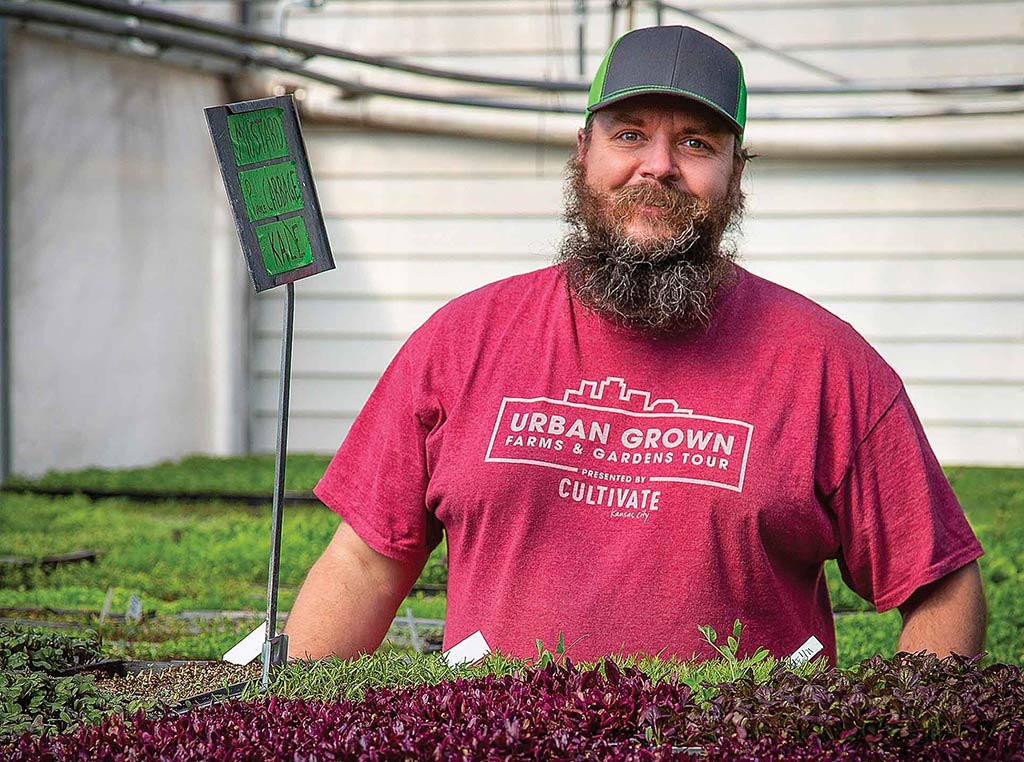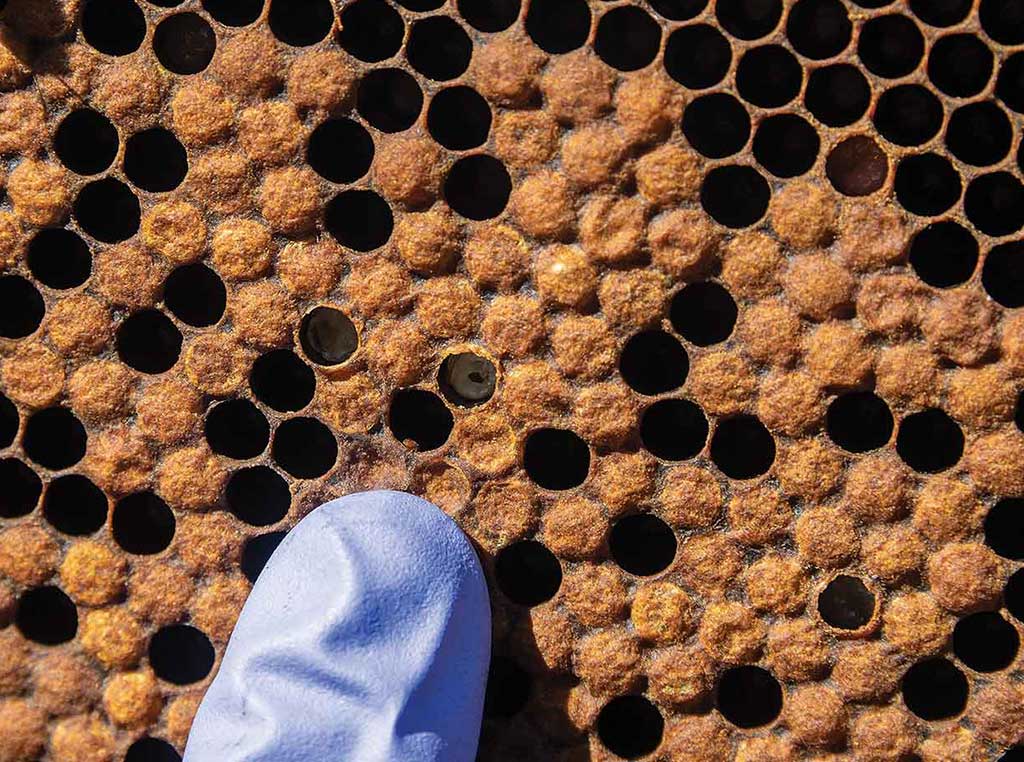
Greg Garbos is surrounded by nutrient-dense but Lilliputian vegetables called microgreens, with a rainbow of color from the many varieties being grown.
Agriculture, Specialty/Niche June 01, 2021
Big Bonus From Little Greens
Microgreens provide a nutritional punch and can be fun to grow.
In Jonathan Swift’s famous story, Gulliver awakens on a foreign island to find himself captured by 6-inch-tall men. And that’s a metaphor for what has happened to Greg Garbos, who is a big fellow with big dreams, but whose mind has been captured by a passion—that perhaps borders on obsession—for growing the perfect Lilliputian garden vegetables called microgreens. In his urban operation called City Bitty Farm, located within the Kansas City, Mo., metropolitan area, he is surrounded by yellows and reds, purples and greens, growing on thousands of 10x20-inch garden trays in 3,800 square feet of greenhouse space. “You are surrounded by the most nutrient-dense greens available anywhere,” he points out to a reporter visiting the intense and efficient operation. “Microgreens attract some people due to their hyper-nutrition profile, while top chefs and foodies love their intense flavor and the beauty they add to a plate when used as a garnish.”
Macro impact. Microgreens are the seedlings of edible vegetables and herbs—not sprouts, which typically are produced in a sterile, almost laboratory operation. Instead, microgreens are harvested at about an inch or two in size, a couple of weeks, on average, after being planted.
Despite their miniscule size, microgreens can have surprisingly intense flavors, provide vivid colors, and offer a crisp, yet tender ingredient for salads, or to top a burger, or to add to soup. A study at the University of Maryland fueled the growing interest in microgreens, finding that these immature versions provided from four to 40 times the amount of nutrients—in particular, the important vitamins C and E, with their antioxidant properties—as compared to their mature counterparts.
The nutritional aspect is one reason Garbos grows all City Bitty microgreens in real soil, as opposed to hydroponic methods. “We believe soil-based growing allows more nutrient density and better appearance and flavor than those grown hydroponically,” he says. “We are servicing James-Beard-trained chefs, so quality of the microgreens we grow is our top priority.”
Growing microgreens took top priority for the Garbos family 10 years ago, when Greg and his wife, Jen (both engineers) found a two-acre property for sale in southern Kansas City. “We were building a greenhouse before we assembled the frame of our bed,” Garbos recalls. “We knew we had to make this an income-producing property.”
From that humble beginning came the rise of the City Bitty (CityBittyFarm.com) operation as a macro player in the microgreen space. But it is not the “day job” of either Greg or Jen—she works for a Kansas City firm, while he directs a site called Four Season Tools (SmallFarmTools.com) devoted to providing sustainable agriculture solutions, from shovels and hoes to portable animal shelters to stationary high tunnel season-extension units.
There’s no direct business relationship between City Bitty Farm and Four Season Tools; but the farm is a place where Garbos can set his mind free to find interesting and innovative solutions that may eventually find their way into the commercial market.
“Since we got here, we’ve been planting twice a week and harvesting twice a week, 104 times a year, every year,” Garbos says. “I love the business model for microgreens,” he continues, citing the high-yield, energy efficient aspects of the business, and its ability to generate income from a relatively small physical space.
But he is also realistic about microgreens as a commercial enterprise. “This is a brutal business,” Garbos says, “with lots of competitors, including some big national players.” The COVID pandemic also has raised havoc in the food-service sector, adding to the difficulty of running a microgreens business. He’s still a fan of microgreens, of course, and he believes they could make a good fit for a homesteader who wants to improve their diet while experimenting with a new type of garden produce. “Microgreens are easy to grow,” Garbos says, “but they are really, really hard to grow well.
If you have the same mindset toward microgreens as you have toward raising your own chickens, for example, and you are willing to nurture your plants every day, then growing microgreens could be a fun, lifelong journey for a homesteader, with a healthy payoff in nutrient-dense greens.”
For beginners, Garbos recommends a book by Eric Franks and Jasmine Richardson called Microgreens: A guide to growing nutrient-packed greens, which is available from Amazon and other retailers. Retailers such as Johnny’s Seeds also offer a number of resources as well as recommended seed mixes for beginners.
Meanwhile, from spicy cilantro to mild mizuna to tender pea tops, microgreens make up a big part of the day for the Garbos family. “We eat microgreens every day, and there is no salad dressing on our table,” he says. “Even though they are tiny, these little greens provide all the flavor you will ever need.”

Stacked for efficiency, microgreens germinate on racks under the trays of growing microgreens. Edible flowers add a splash of color to a summer microgreens salad mix.

Read More

SPECIALTY/NICHE, EDUCATION
Chilling Out
Using controlled atmosphere to fight the battle with varroa.

